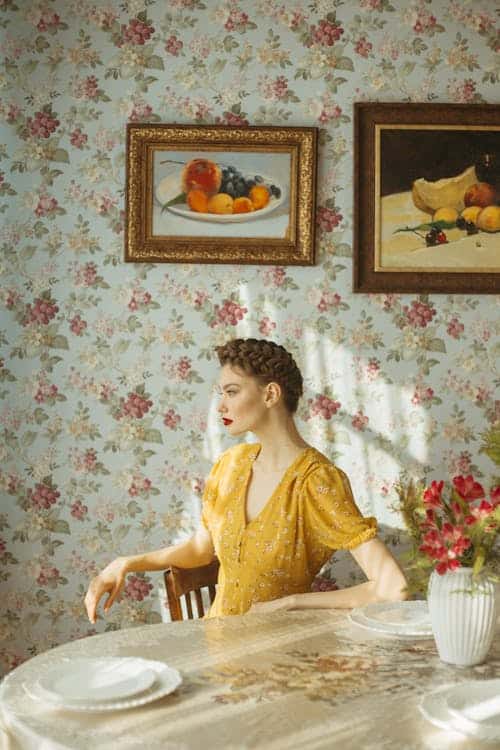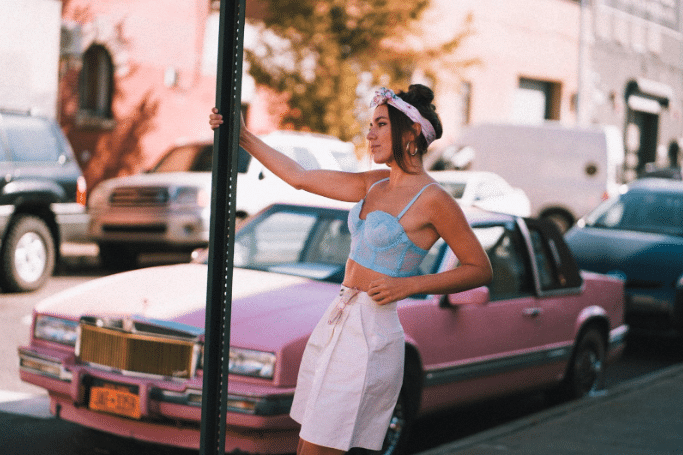Chloe Montgo from Fashion-era
As we step into 2024, the design realm is reveling in a remarkable resurgence of vintage and retro styles, blending the timeless elegance of the past with the dynamic flair of modern aesthetics.
This trend transcends mere nostalgia; it represents a sophisticated dialogue between eras, showcasing how classic design elements can be reimagined to thrive within contemporary contexts.
Let’s journey through the ways in which vintage and retro fashion trends are being revitalized and seamlessly woven into the fabric of modern design, offering a rich narrative thread that enhances today's fashion landscape.
The Cultural Impact of Vintage and Retro Revivals
The comeback of vintage and retro styles goes beyond aesthetic appeal — it also carries significant cultural implications. These styles evoke memories and emotions tied to specific periods, allowing individuals to connect with past generations and their experiences.
As we integrate these retro styles into modern fashion, we’re not only reviving designs but also rekindling the societal and cultural narratives that shaped those eras. This reconnection with history through fashion can foster a deeper understanding of how past influences continue to shape contemporary values and trends.
Additionally, the adoption of vintage and retro elements in modern design reflects a broader societal shift towards valuing sustainability and ethical consumption, as these practices often involve recycling and reusing existing garments, reducing waste, and promoting environmental responsibility.
Innovation Through Retro and Vintage Inspirations
Moreover, the infusion of vintage and retro aesthetics into modern design often drives innovation in fashion technology and materials. Designers are challenged to find ways to replicate the look and feel of vintage fabrics using new, more sustainable materials, or to innovate with production techniques that can mimic traditional craftsmanship in more efficient ways.
This exploration not only results in unique and appealing garments but also pushes the fashion industry toward more sustainable practices. By blending the old with the new, designers are not just creating fashion; they are advancing the industry, ensuring that it remains vibrant, relevant, and conscientious. These trends showcase how the past can inform future creativity and sustainability, making vintage and retro styles not just a fashion statement but a catalyst for continuous innovation in design.
Reviving Classics with a Modern Twist
The current wave of fashion isn’t just about resuscitating old trends; it’s about reinterpreting them through a modern lens.
Designers are increasingly inspired by the extensive archives of fashion history, reworking retro silhouettes and vintage motifs with innovative materials and contemporary techniques.
This creative synthesis breathes new life into classic styles, making them vintage relevant and appealing to today’s style-conscious audience.

Key Vintage and Retro Trends Making a Modern Comeback
Several iconic styles from decades past are triumphantly returning to the fashion scene, each rejuvenated with a modern twist:
- Art Deco Opulence: The intricate geometric patterns and sumptuous embellishments of the 1920s Art Deco period are revisited in today's apparel and accessories. Designers are embracing the luxurious aesthetics of this era, incorporating metallic threads, mirrored embellishments, and structured shapes that echo the past's opulence while aligning with today’s minimalist trends.
- Mid-Century Modern Lines: The clean, functional aesthetics of the 1950s and 1960s are finding their way back into modern fashion through streamlined silhouettes and a restrained color palette. The emphasis on functionality and understated elegance matches well with the current preference for sustainable and adaptable fashion.
- Psychedelic Revival: The bold colors and swirling patterns that defined the late 1960s and early 1970s psychedelic style are experiencing a resurgence, especially in casual wear and summer collections. These vibrant, retro designs are paired with modern fashion elements to create outfits that are both eye-catching and spirited.
- Grunge Redux: The raw, edgy look of the 1990s grunge scene is re-emerging in contemporary streetwear. Modern grunge incorporates traditional elements like flannel, distressed denim, and layered outfits, maintaining the rebellious spirit of the retro style but refining it for today’s fashion sensibilities.
Embracing Vintage and Retro in Everyday Wardrobes
Incorporating vintage and retro styles into a modern wardrobe isn’t just about adopting old trends. It's about embracing the ethos of past eras and blending them with contemporary trends to make a statement that is both distinctive and timeless. Here’s how to master this blend:
- Mix and Match: Combine vintage pieces with modern staples. For example, a classic tweed jacket from the 1960s can be paired with sleek modern trousers and a crisp shirt, bridging decades of style.
- Accessorize Thoughtfully: Accessories can make or break an outfit. Choose vintage accessories like brooches, scarves, or hats to add a subtle yet impactful vintage or retro feel to an otherwise modern ensemble.
- Customize and Tailor: Many vintage items might require some customization to fit contemporary style standards and body shapes. Tailoring these pieces can help preserve their classic appeal while ensuring they meet modern expectations for comfort and fit.
Conclusion: A Timeless Trend
The resurgence of vintage styles in modern design underscores a deep appreciation for the richness of fashion history and a commitment to sustainable and unique fashion consumption. By embracing these trends, we're not merely revisiting the past; we’re redefining the future of fashion, ensuring that old and new coexist in stylish harmony.
As we continue to explore and integrate these timeless trends, we create a wardrobe that is not only fashionable but also profoundly personal, echoing the enduring charm and beauty of vintage aesthetics.



